I can’t quite remember where I first heard about the concept of the Hollow Earth.
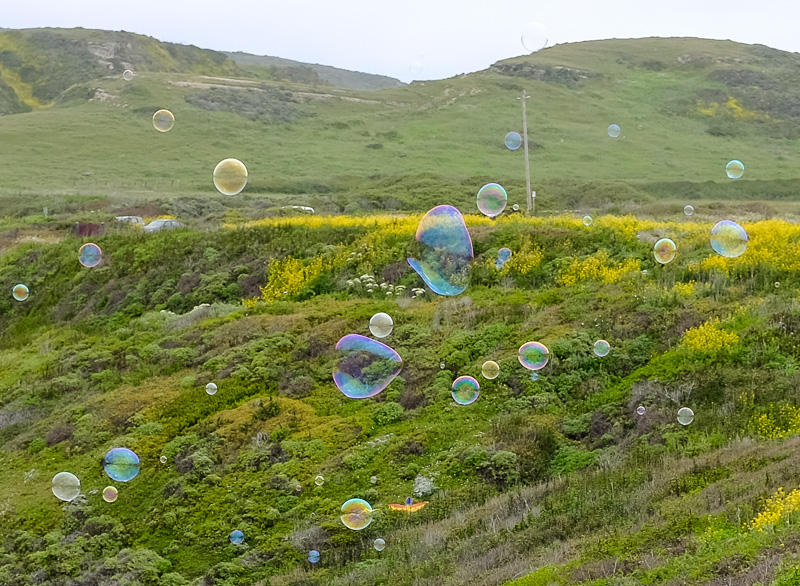
Early on, I read Jules Verne’s 1864 Journey to the Center of the Earth—I was a huge fan of Verne—but even as a boy I could see that his novel was a failure. The book is about a large underground cave with a small ocean in it. Big deal. Edgar Rice Burroughs’s Pellucidar novels of the Hollow Earth were equally disappointing. Nothing’s all that different or special in these books, it’s just a bunch of people running around and fighting with each other.
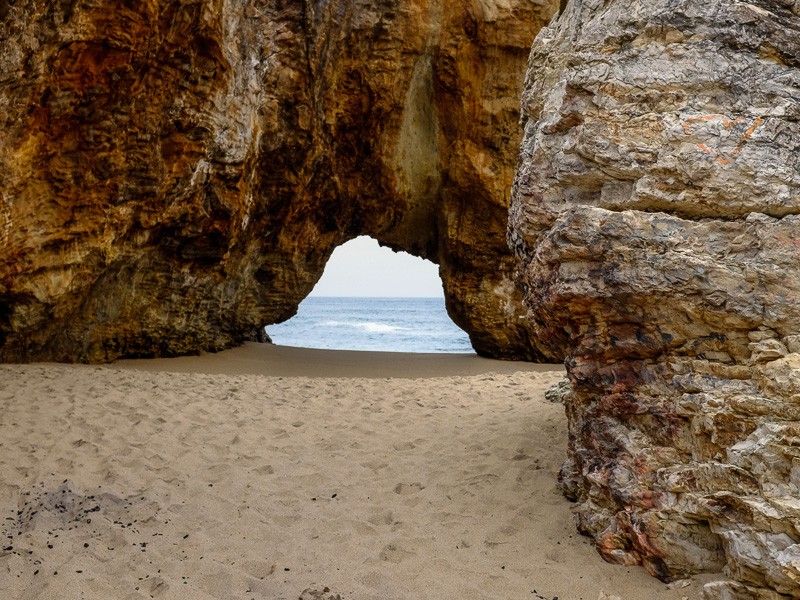
The first book that really gave me a taste of what I was after was Edgar Allan Poe’s 1838, The Narrative of Arthur Gordon Pym of Nantucket, which I didn’t closely study until I was about thirty, at which time I got a European Penguin edition of the novel, annotated by the excellent scholar Harold Beaver.
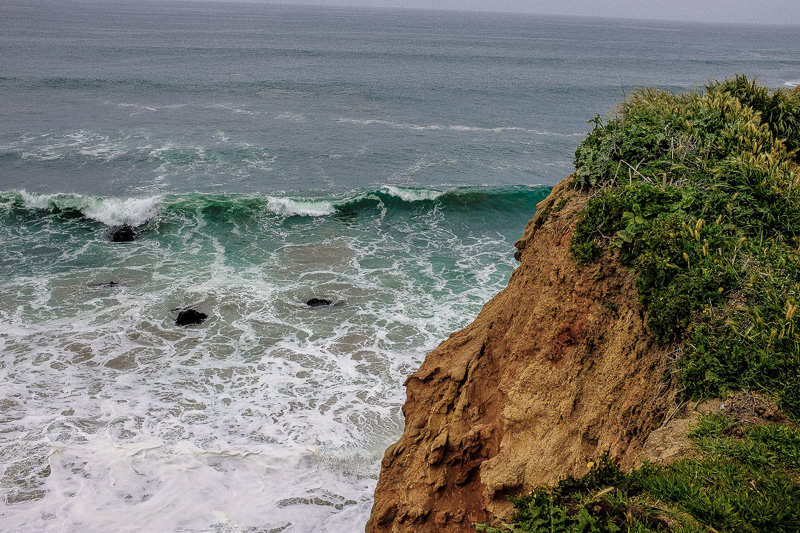
Poe’s novel is seemingly unfinished—as it’s a narrative written by Arthur Gordon Pym, who disappears. It describes a sea voyage to the walls of ice around the Southern pole, with the implication that there is a huge opening to be found there, a great shaft leading into Mother Earth’s womb. So deep was Eddie’s subtlety that when his voyagers made it to the lip of a great maelstrom at the South Hole, it takes some deep thought to figure out that’s what they’re seeing. In the final scene on March 22 (my birthday!), they seem to go over the edge and into the hole. Here’s Poe’s ending:
The darkness had materially increased, relieved only by the glare of the water thrown back from the white curtain before us. Many gigantic and pallidly white birds flew continuously now from beyond the veil, and their scream was the eternal Tekeli-li.
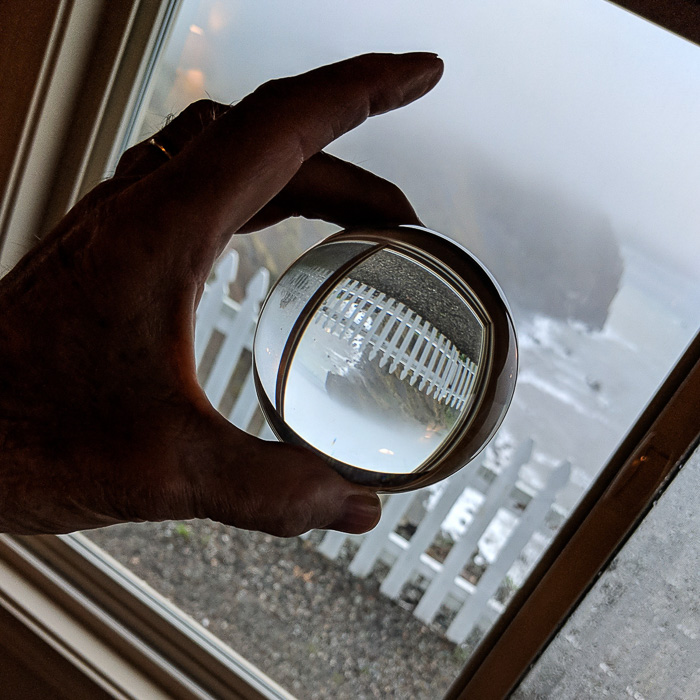
Wanting more of this, I reasoned that, even if Poe had erred about the hole being clearly visible, it might still exist, but be hidden beneath a sheet of accumulated snow and ice. In 1986, I started work on my novel, The Hollow Earth: The Narrative of Mason Algiers Reynolds of Virginia. The Earth is hollow, like a tennis ball. And you’re weightless in there. The wondrous Hollow Earth holds jungles, seas, native tribes, flying pigs, killer nautiluses, giant ants, and live flying saucers. Godlike sea cucumbers at the Hollow Earth’s core illuminate the great spherical space with branching rays of pink light.
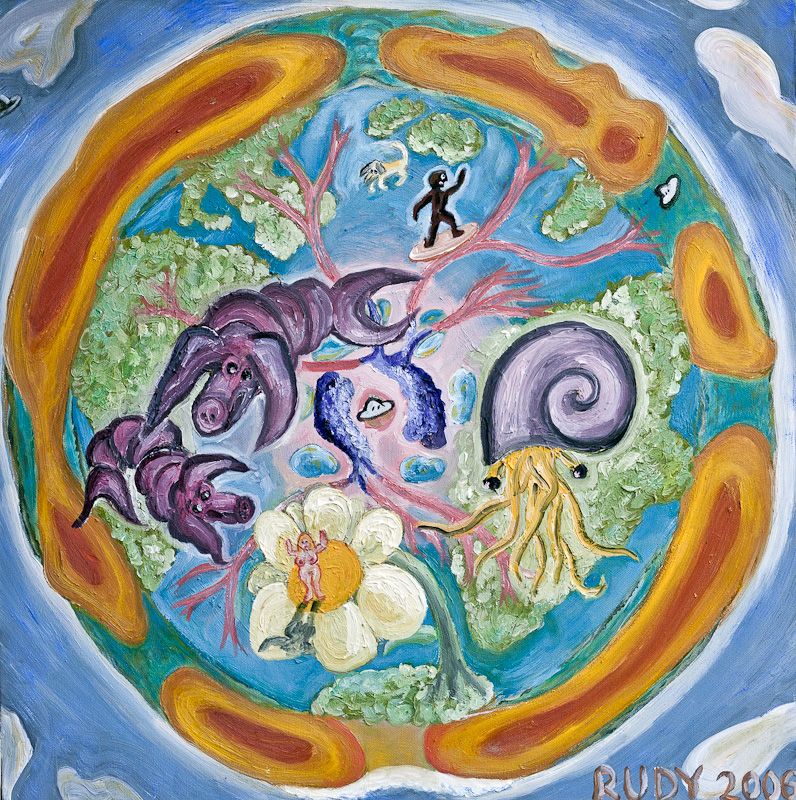
I began preparing to write a novel about my new hero Mason Reynolds’s journey from Virginia to Antarctica and through the South Hole into the Hollow Earth. My old friend Gregory Gibson, in his capacity as antiquarian bookseller, sent me some nineteenth century sailing narratives, and a fine twenty-volume edition of the collected works of Poe. I pored over these, coming to identify with Eddie. Poe wrote of being possessed by an imp of the perverse, who impelled him to do deliberately alienating and antisocial things—which described my punk attitude to a tee.
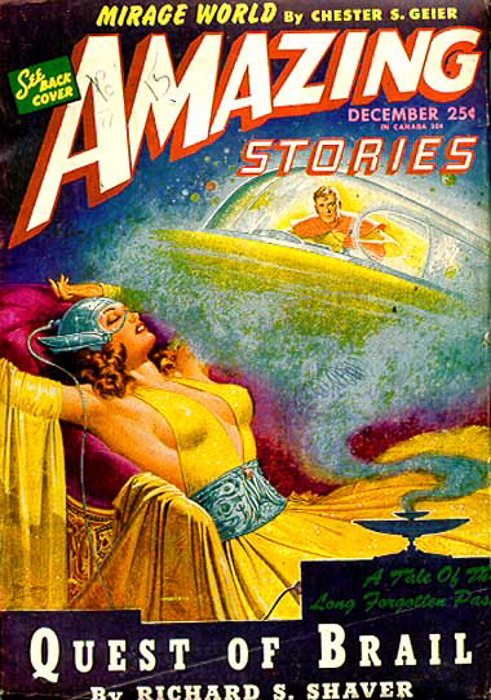
While still in Lynchburg, my expanding researches had led me to the rare book room in the library of the University of Virginia, where I found writings about John Cleves Symmes Jr., who began proselytizing his doctrine of the Hollow Earth in 1818. Symmes lived in Newport, Kentucky, and he styled himself the Newton of the West. He was too busy lecturing—or too sly—to publish any books under his own name, but I found a nonfiction Symmes’ Theory of Concentric Spheres, and a novel, Symzonia: A Voyage of Discovery, which are purportedly written by Symmes’ followers. My feeling is that, as the books speak so very highly of Symmes, he either wrote them himself or collaborated heavily.
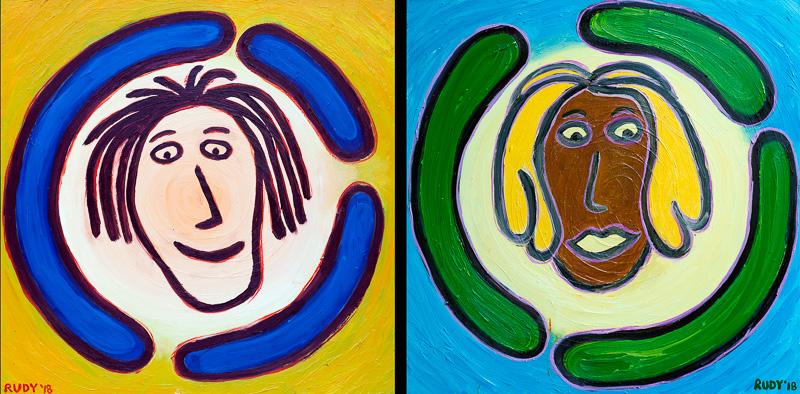
In 1985, the Lynchburg, Virginia, traffic police remanded me to a series of driver education classes. (It was a kind of turning point for me—the first time that I internalized the fact that I had some problems. Not that I managed to fix them as yet—that would take me about ten more years.) Anyway, in these classes, I sat next to a Black guy called Otha Rucker. He wasn’t from Lynchburg proper, but from way out in the country. I had a kind of family feeling towards him, and I hung out with him during the class breaks. Otha’s country accent was so strange that I could hardly understand a word that he said—often I couldn’t even discern the general topic he was talking about. But I liked being with him anyway. After we left Lynchburg and I got going on The Hollow Earth, I’d write about a white boy from a farm near Lynchburg who makes a fabulous voyage with his Black half-brother, Otha. [In that painting above, that’s Mason on the left, but it’s not Otha on the right, it’s Mason’s wife Seela from the Hollow Earth.]
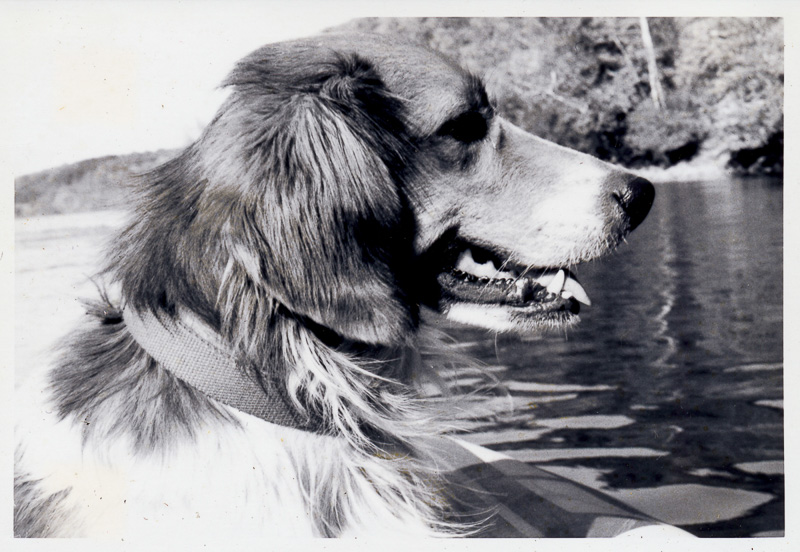
My dog Arf was another influence. One day in 1985, he and I floated down the James River from Lynchburg in a rubber raft, just the two of us.. Arf spent most of the ride sitting like a person, with his butt down, and with his back leaning against the fat ring of the raft. He raised his noble muzzle to the gentle breezes, staring off across the water, cocking his ears, taking everything in, twitching his beautiful black nose. Eventually we fetched up in some shallows and made our way to the highway. An old farmer in a pick-up gave us a ride back into town. This little outing was another seed for The Hollow Earth .
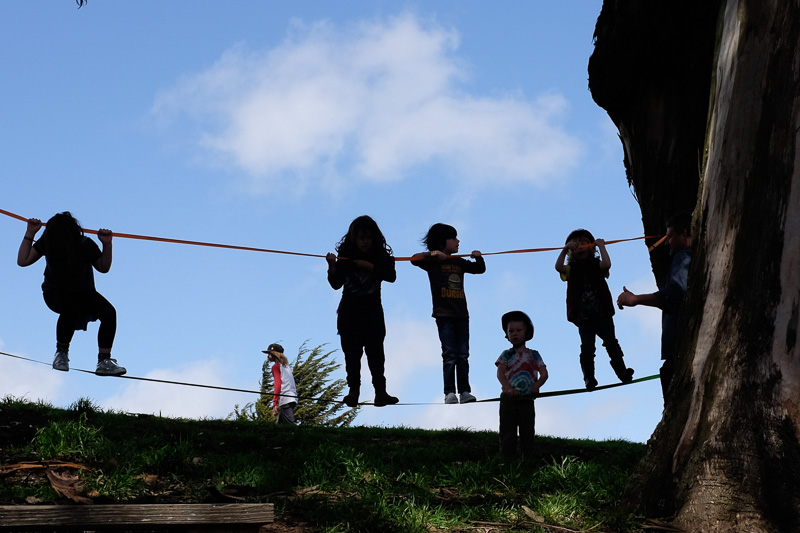
Another key to getting the book started was my recollection of Newton’s so-called “Shell Theorem” of 1687, which I’d even proved for myself using calculus…it’s not even that hard. As Newton puts it: “No net gravitational force is exerted by a hollow shell on any object inside, regardless of the object’s location within the shell.” Inside the Hollow Earth, you float around like in space—but there’s air to breathe! Perfect.
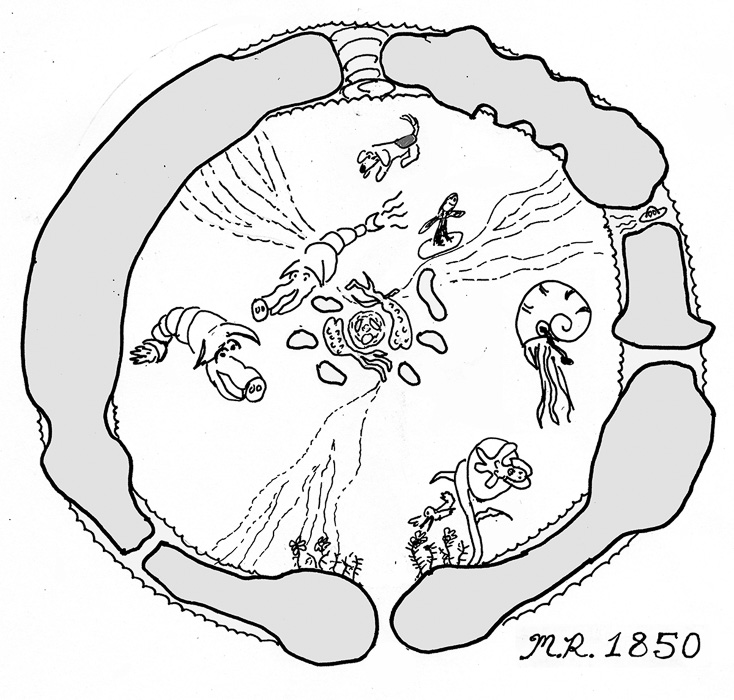
Oddly enough, so far as I know, nobody else’s Hollow Earth novels take this key fact into account. Blind fools! They always have the characters walking around “upside down” on the inner surface of the Rind. Thereby missing the real adventure and excitement of being inside the Hollow Earth. I was writing, as I liked to say, “Geography SF.”
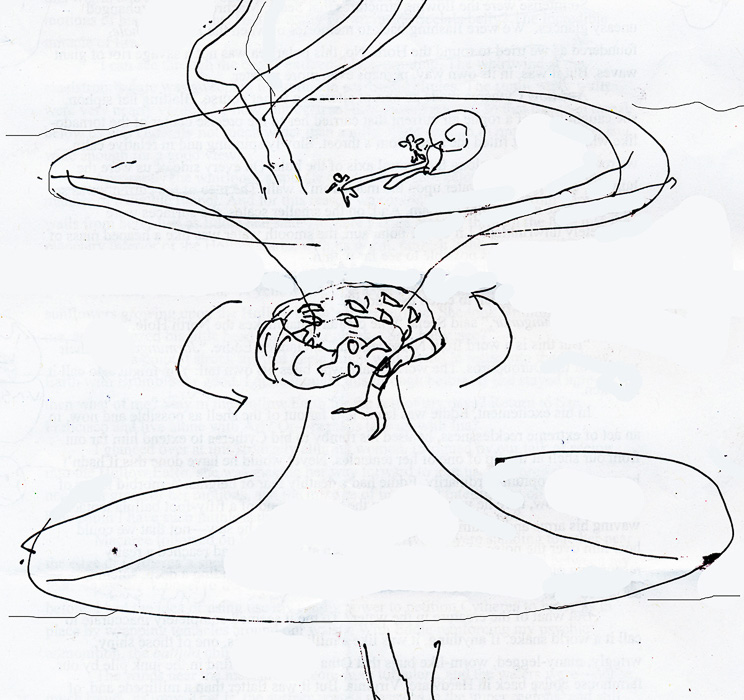
It took me several years to finish my novel as, just as I was starting, my family and I moved from Lynchburg, Virginia, to Los Gatos, California, where I’d found a job teaching math and computer science at San Jose State University in Silicon Valley. It was hard getting started, as I didn’t know jack shit about computers. I only had time to write during the summer months—when, metaphorically speaking, the pack ice would melt.
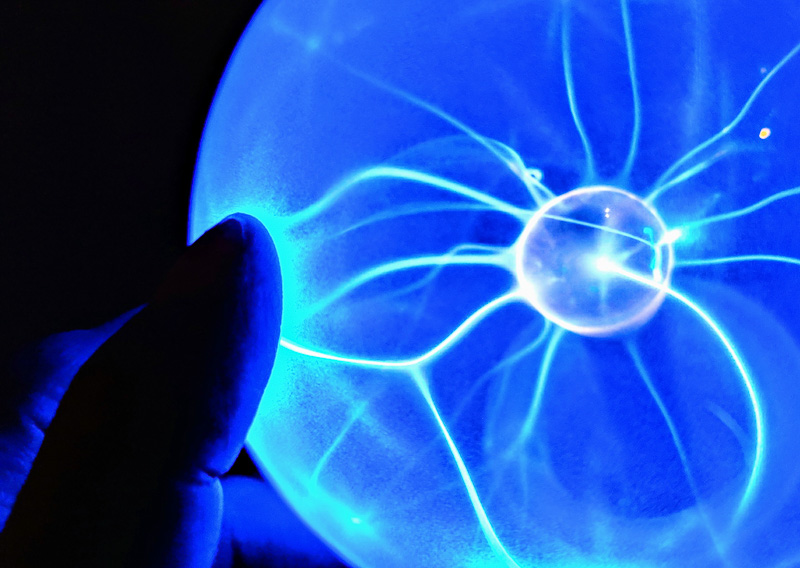
Once I got going, I wasn’t sure how to light up the inside of the Hollow Earth. If you put an Inner Sun in the center, then it seems like everything would fall up into the sun. By now we were settling into California, and I was walking around San Francisco with my new friend Marc Laidlaw, also an SF writer. This would have been 1986 or 1987. In a new age store called Star Magic on 24th St. near Castro St., Marc and I spotted a new science toy called a plasma sphere. By now nearly everyone’s seen one of these things—it’s a hollow glass ball with an electrode in the center. Branching lines of electrical discharge reach out from the electrode to the outer surface, and if you move your fingertips around on the sphere, the glow lines trail after them. Aha! That’s the way to light up the Hollow Earth! Have titanic aurora-like streamers of light reaching from the Central Anomaly to the inhabited inner surface of the Rind.
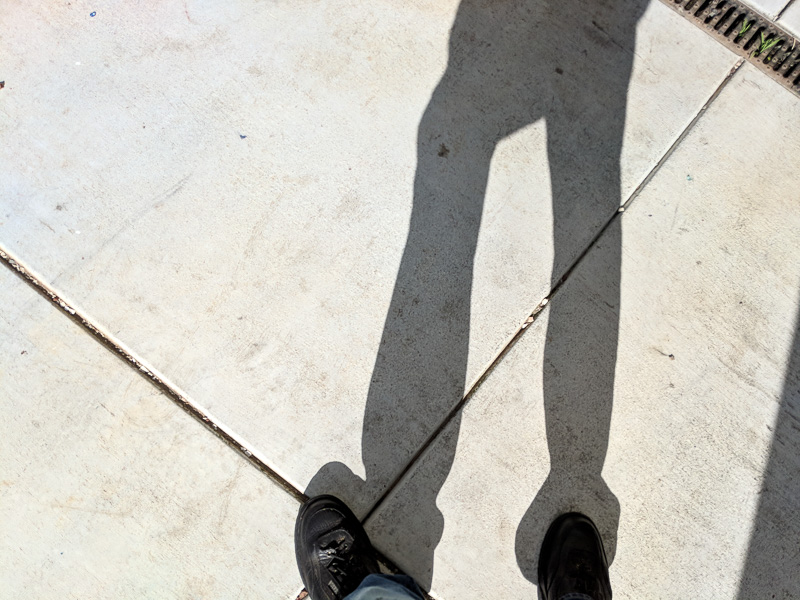
I had some fun flipping the races back and forth in The Hollow Earth. At the core of the Hollow Earth they find the sky-surfing tribe known as the black gods. Nearby are a cluster of great sea cucumbers, who are known as the woomo. Mason’s traveling companion, the Black Otha, stays at the core. Mason, his wife Seela, and Eddie Poe make their way out through the crust and back to Earth. Due to their time in the strong light of the woomo, their skins are now black. And they have to deal with that, as it’s 1850 in the South.
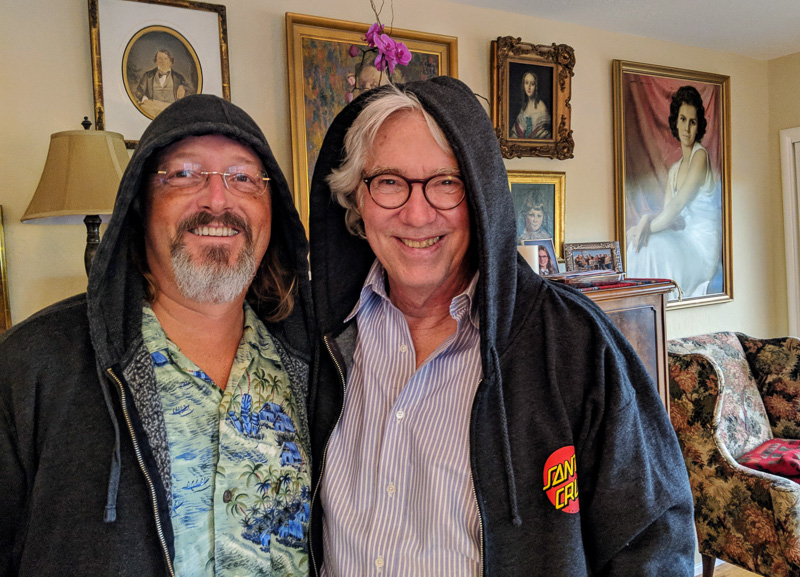
Repeatedly iced-in by my teaching duties, I took nearly three years to finish writing The Hollow Earth, which finally appeared in 1990, edited by, as I recall, John Douglas at William Morrow. The book got good reviews. One might have termed it steampunk, but that word wasn’t yet widely in use. My favorite review wasn’t even printed, it was just something that Marc Laidlaw said in an email: “Rudy has written the great American science fiction novel.” [That’s a recent photo of Marc and me above.] For more blurbs, and more about the book’s publishing history, see my Hollow Earth book page.

At the end of the book, I used the hoaxing Poe-like expedient of writing an afterword to the effect that The Hollow Earth was a manuscript that I’d found in the rare books room at the University of Virginia. For years I got occasional emails from readers taken in by the hoax. They wondered why I haven’t done anything to help mount an expedition to retrace my hero Mason’s steps. One guy even assumed that since The Hollow Earth was just an old public-domain manuscript that I’d edited, it was okay to post a page-scan of my book on the web!
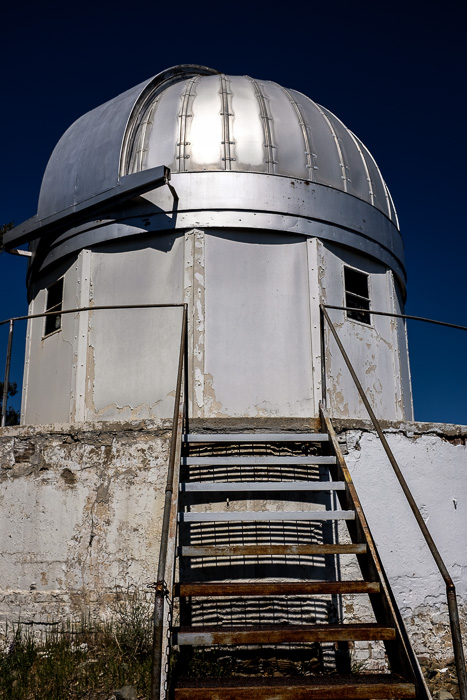
My kids liked hearing me talk about the Hollow Earth. Once, while cross-country skiing with my daughter Isabel near Lake Tahoe, I pointed out the blueness of the light that seemed to emerge from the holes our ski-poles made in the snow.
“Proof that the Earth is hollow!” I told Isabel. “As if more proof were needed,” she responded cheerfully. “When will they see?”
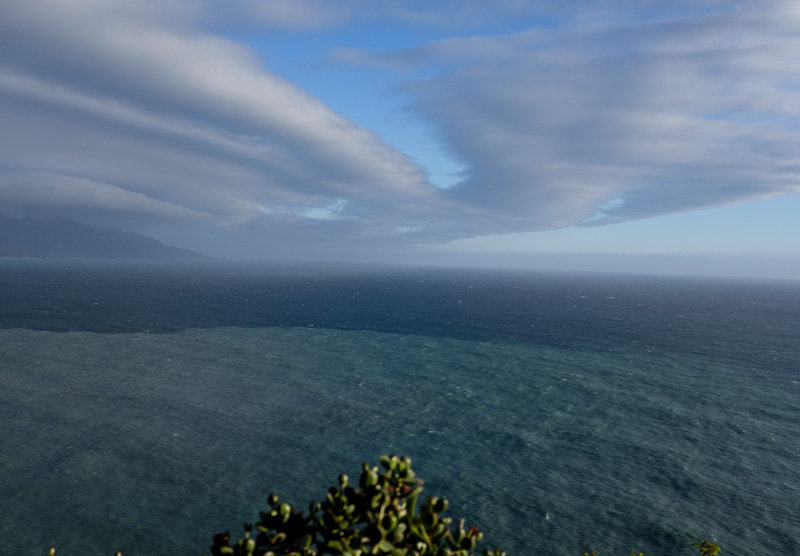
In 1990, there was an article about my novel in the San Jose Mercury News, and a street person came by my office to tell me some news. “The sun is cold and hollow,” he said. “That light you see overhead is just the interaction of some special rays from the sun with our upper atmosphere. You should write about the Hollow Sun.”
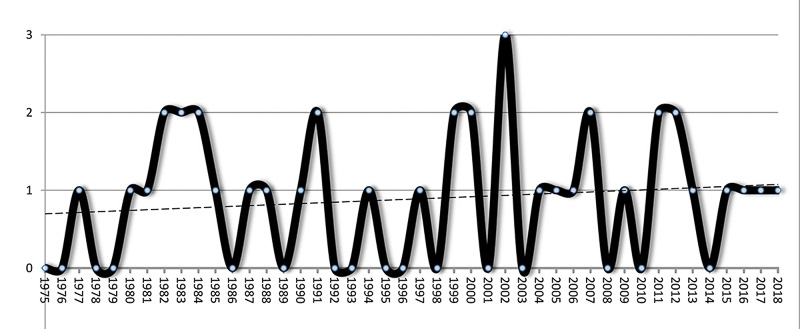
I’m always wondering how long I can keep writing books. I even have an ongoing Excel graph of of my books per year, with a curve fit to the numbers.
I started thinking about writing Return to the Hollow Earth in January, 2017, but I didn’t get down to writing the opening until April, 2017. First I had to go through a lot of possibilities. I did even, in fact, consider a side trip to the interior of the Hollow Sun—but I decided there were still a lot of interesting things to do inside the good old Hollow Earth. A big breakthrough was when I decided decide to bring back Eddie Poe as a character—even though it seemed like he died at the end of The Hollow Earth. But writing the book without Eddie would have been like a hotdog without a bun or a dog.
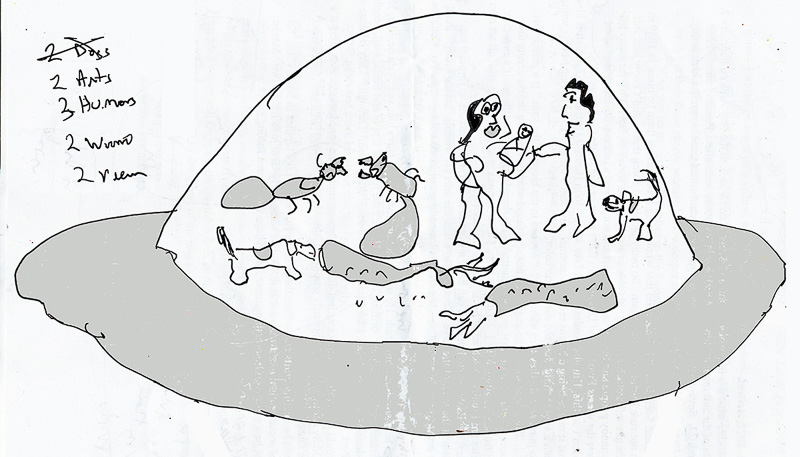
For a long time I wondered what kind of twist I could put at the end. And then I decided to have Mason jump into the future at the end of this new narrative. In April, 2017, I emailed Marc Laidlaw about this plan.
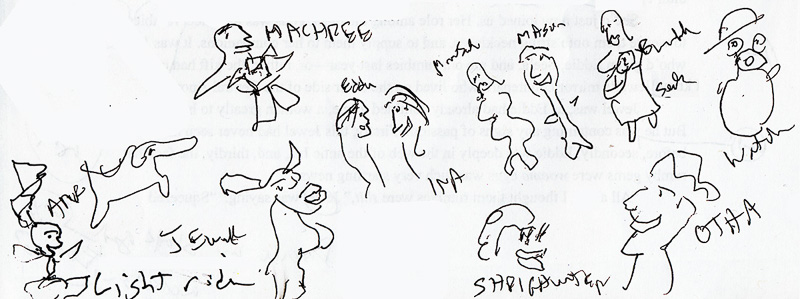
I thought of an angle to pick up the pace on Return to the Hollow Earth. Mason and the not-dead-after-all Poe go back into the Hollow Earth, fine. And Poe wants to go back through the Anomaly to the original Earth he came from, as he would still have a shot at a literary career there. Mason goes along for the ride. But they don’t actually get back to the old Earth. They get hung up inside the Anomaly, the taffy-slow-time zone in between the two worlds, and the stay too long, and end up being spit back out, still on our side…only now it’s 2050 AD. Boffo! It took me three solid months of note-writing to get here. I worried I was done writing novels, out of the biz. I always think my process won’t work, and then, thank you muse, it does again. My trick, as you know, is to start a separate manuscript that’s my writing notes for the book I want to write, and keep going back in there and wheenking, and trying ideas and discarding them, and pushing like it’s a car mired in mud or deep snow, and finally I get so desperate and hopeless that I finally notice a tiny air hole or a stock move where I might, if I just go and try it, might find some oxygen to breathe, even if it’s dumb, and, gasping and sobbing, I claw my way onto a floating bit of flotsam and jetsam that I ride down into the roaring glorious maelstrom of the novel.

Later, I changed my mind about how far Mason goes into the future, and I had him emerge from the Hollow Earth in 2018—so he could meet his editor, yours truly, Rudy Rucker, who, as it turns out, has in fact already written Return to the Hollow Earth via woomo tekelili transcriptions of Mason’s thoughts. This is what I’d call a “wild hair” fix for the question of when Mason wrote this second narrative, and how I got hold of it. Love it. Such total bullshit! A Poe-quality hoax! Here’s the scene where Rudy meets up with Mason in a Santa Cruz graveyard on March 28, 2018.
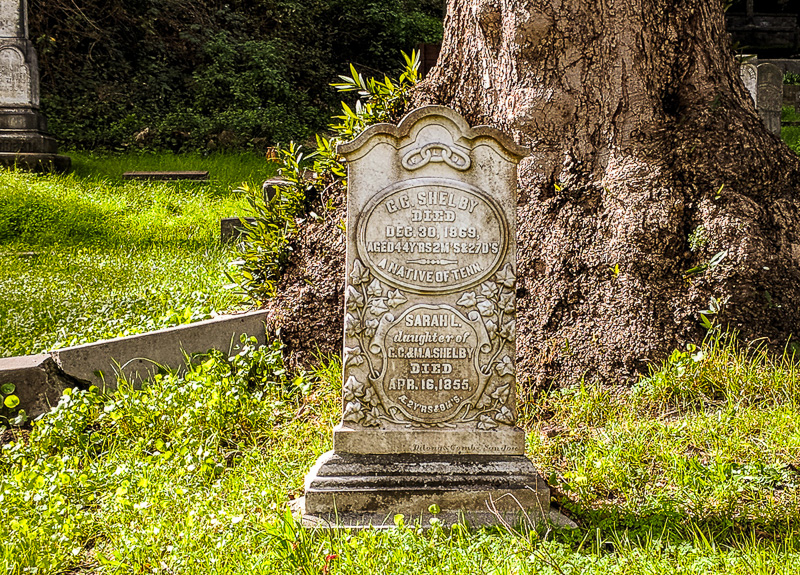
Old Rudy strode up to me and shook my hand. He seemed to know exactly what was going on. And he wanted to tell me all of it at once. “I knew you’d come to Santa Cruz,” said Rudy. “So I drove over today, and right away I saw your story in the Good Times free newspaper, and of course I went by their office. The woman said to look for you in this cemetery, and here you are. And you’re still black. What a trip. I can hardly believe this is happening. And, oh my god, there’s Poe and Ina. They look so gnarly. Hi Eddie! So insane that you buried yourself in a bronze casket for a hundred and forty years. You’re nuts! I love it! Glad to see you’ve got your box. And here’s Seela and Brumble? So wonderful to meet you, Seela. You’re gorgeous. I know it’s hard when your baby cries like that.” He drew out a handkerchief, dried Brumbles face, and cooed to him in a high voice. “Did the policeman scare you? Do you need a new di-di? Can I hold him, Seela? Maybe he’ll be so surprised that he stops.” Seela glanced at me, and I nodded, and she handed the baby to Rudy. Brumble emitted a single, shocked squall, and then settled down into hiccups, resting his head on Rudy’s shoulder. Finally I found my voice. “How do you know all this?” I asked Rudy. “I understand that you edited The Hollow Earth—so of course you’d know my history. But the new things—how do you know them?”
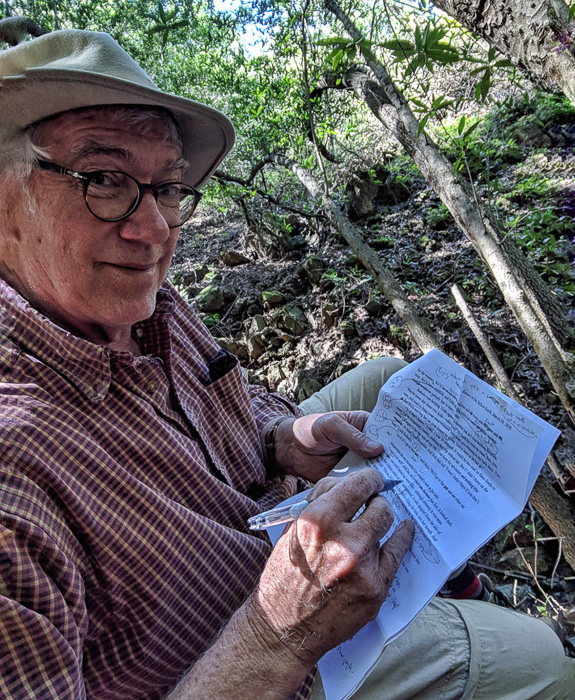
To make Rudy’s channeling of Mason plausible, I mention several times during Return to the Hollow Earth that Mason was longing to start writing his narrative, and was embroiled in too much ongoing chaos to write, but he was composing the book in his head, with his mind singularly enhanced by the rumbies. He was in effect writing it to “the cloud” via telepathy, and Rudy was in effect receiving it from the cloud. The cloud here being the shared cosmic mind of the woomo. And then, naturally, Mason and Rudy have to negotiate about the royalty rights!
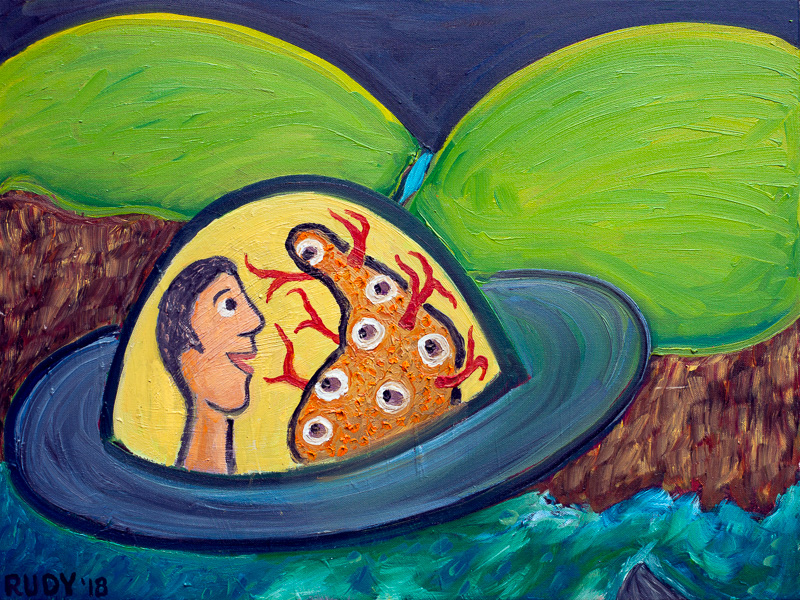
“Honeymoon” oil on canvas, April, 2018, 24” x 18”. Click for a larger version of the painting.
Inspired by a new painting, I wrote a nice scene in Big Sur at the end, where we have humans riding in flying saucers with the Hollow Earth woomo aliens. Also giant ants, of course.
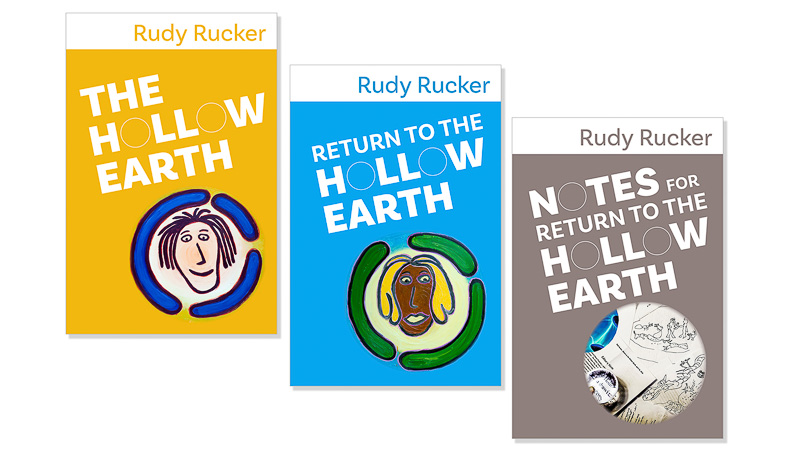
Return to the Hollow Earth is my twenty-third novel and I’ve now finished writing the first draft. I’m currently revising it, with an eye to publishing it by August, 2018, in ebook, paperback, and hardback. I’ll be publishing it as a set of three titles; The Hollow Earth, 3rd Edition, Return to the Hollow Earth, and Notes for Return to the Hollow Earth. My daughter Georgia is designing the covers.
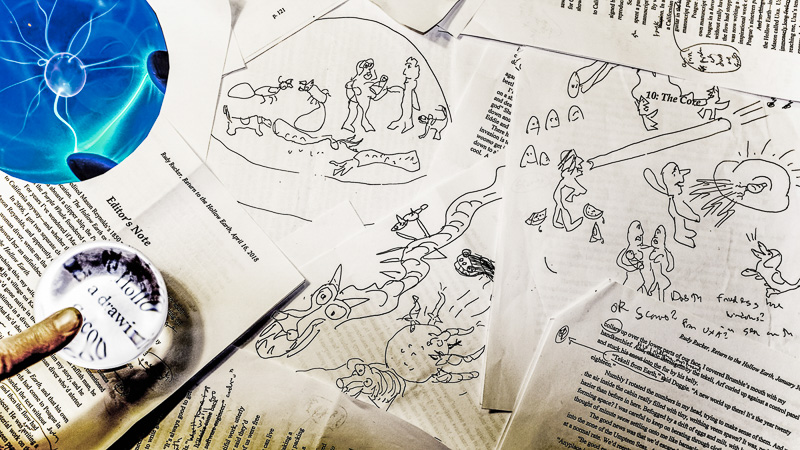
Rather than taking the book to a commercial publisher or to a small press, I’ll be publishing it myself via my Transreal Books and running a Kickstarter to garner the equivalent of a book advance for my year of writing labor. By the way, Mason Reynolds is angry at Rudy for not getting a large commercial publisher to take on this new narrative. But what else can I do? That’s how publishing is in this odd future world of 2018.
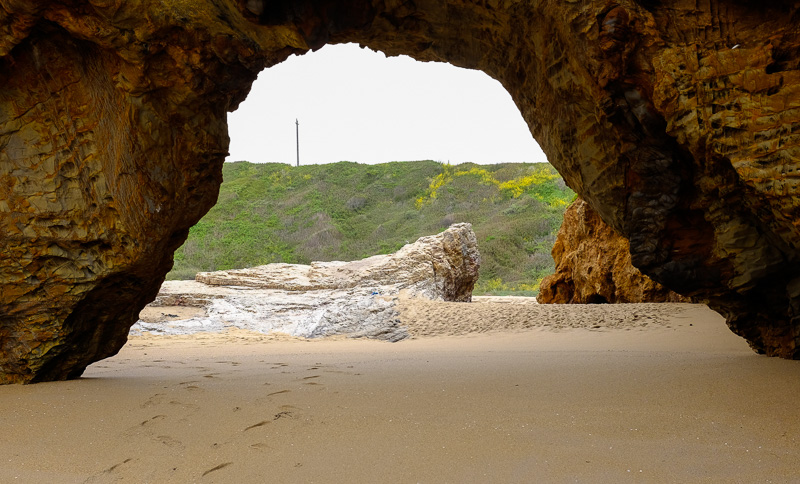
Out here on the surface. But maybe we won’t be here long. As I point out in my Editor’s Note to Return to the Hollow Earth:
Definitive proofs of the Hollow Earth doctrine are in the cards. Eventually the passageways at the poles will reopen. As the Antarctic ice melts, the cap across the South Hole will crumble. And, as ice vanishes from the Arctic and the speeds of the polar jet streams increase, the pre-1850 North Hole maelstrom will reemerge. And then will Mason Reynolds be granted his place in the Pantheon of great explorers!
And if you don’t believe all this, you can come to my house and see Mason’s dog…who happens to be named Arf. Living proof that the Hollow Earth is real.
Added May 31, 2021. “Removing the N Word”
I read a very cogent essay in the New York Times, April 30, 2021, “How the N-Word Became Unsayable,” by John McWhorter. And I decided that I really should not have the N-word in the Hollow Earth novels at all. So I searched through, and found it used about five times, and replaced the uses, mostly by “black.”
And then I went and changed the ebook, paperback and hardback editions of the combined edition The Hollow Earth & Return to the Hollow Earth, and, at least for now, dropped the single volume editions from distribution, and stated that the new 2021 combined edition supersedes all earlier editions.









May 8th, 2018 at 4:34 pm
love it! looking forward to reading it.
May 9th, 2018 at 5:24 pm
Rudy – I was so excited about the idea of a sequel that I just jumped on the Kickstarter campaign instantly without even reading what it is about. Even more excited now after this post. Twenty-three novels? Geeeeez….I remember when White Light was published. And how amazing it was. Thank you for everything since and all to come.
June 2nd, 2018 at 12:41 am
I just found this page: Gödelian Mysteries
“Gödel initially claimed to have discovered evidence of a conspiracy suppressing Leibniz’s work—that Leibniz had in fact completed the famously unfinished (and unfinishable) universal language of thought, but had been prevented from publishing it. In conversation, Gödel suggested that the Viennese Academy of Science, officially inaugurated in the mid-19th century, had in fact been founded by Leibniz in secret some centuries before; its record books, which contained references to the complete characteristica universalis, had been systematically destroyed.
On one occasion, Gödel called his friend Morgenstern, the economist, to the Firestone Library at Princeton, and showed him two piles of books: one stack of works published in Leibniz’s time, citing him, and another pile of the exact Leibniz editions which were being cited. He proceeded to demonstrate that in a suspicious number of cases, the cited passages do not exist; either the citations refer to a non-existent chapter, to a missing paragraph, or to a page on which the supposed text does not appear, as if the books had been altered after the citations were made.”
Someone needs to write a story starting from that; Borges is no longer available (except by seance) and Neal Stephenson is even harder to reach, so you instantly came to mind 🙂